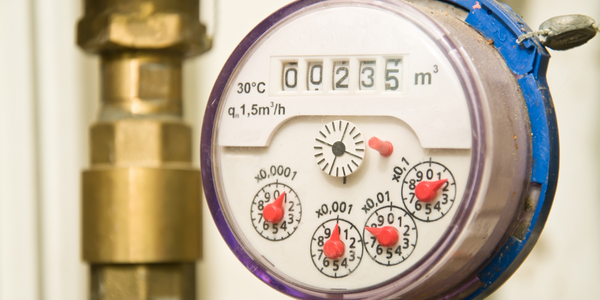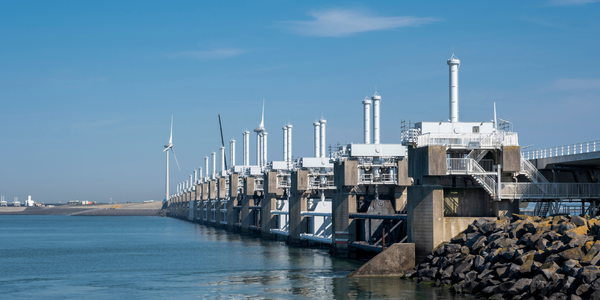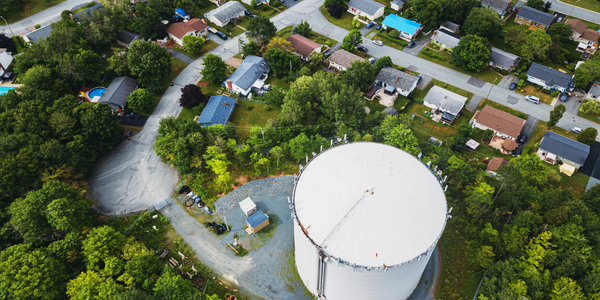Technology Category
- Sensors - Utility Meters
Use Cases
- Intelligent Urban Water Supply Management
- Water Utility Management
About The Customer
Padania Acque is a water services provider based in the Italian province of Cremona. The company is responsible for providing water services to 113 municipalities in the region. As a key player in the water services sector, Padania Acque is committed to ensuring reliable and sustainable operations for its customers. The company is constantly seeking innovative solutions to improve its operations and provide better services to its customers. The adoption of EcoStruxure for Water and Wastewater solutions is a testament to the company's commitment to innovation and sustainability.
The Challenge
Padania Acque, a water services provider for 113 municipalities in the Italian province of Cremona, was facing challenges in managing its water supply system. The company was struggling with high water losses, which were significantly above the national average. This was not only leading to wastage of a precious resource but also impacting the company's financial performance. The traditional methods of control and management were proving to be inefficient, leading to operational inefficiencies. The company was in dire need of a solution that could help it monitor and optimize its entire water supply system, and enable it to take predictive actions to ensure reliable and sustainable operations for its customers.
The Solution
Padania Acque turned to EcoStruxure for Water and Wastewater solutions, including EcoStruxure Water Advisor – Water Loss and Water Simulation. These solutions provided the company with the ability to monitor and optimize its entire water supply system. The EcoStruxure Water Advisor – Water Loss solution helped the company to identify and address areas of water loss, thereby reducing wastage. The Water Simulation solution, on the other hand, enabled the company to take predictive actions to ensure reliable and sustainable operations. The digitized control and management provided by these solutions led to significant improvements in the company's operations.
Operational Impact
Quantitative Benefit

Case Study missing?
Start adding your own!
Register with your work email and create a new case study profile for your business.
Related Case Studies.

Case Study
Automation of the Oguz-Gabala-Baku water pipeline, Azerbaijan
The Oguz-Gabala-Baku water pipeline project dates back to plans from the 1970’s. Baku’s growth was historically driven by the booming oil industry and required the import of drinking water from outside of the city. Before the construction of the pipeline, some 60 percent of the city’s households received water for only a few hours daily. After completion of the project, 75 percent of the two million Baku residents are now served around the clock with potable water, based on World Health Organization (WHO) standards. The 262-kilometer pipeline requires no pumping station, but uses the altitude differences between the Caucasian mountains and the capital to supply 432,000 m³/d to the Ceyranbatan water reservoir. To the people of Baku, the pipeline is “the most important project not only in 2010, but of the last 20 years.”

Case Study
Controlling water levels in canals with LoRa
A circuit of the small inland waterways and canals with stops at the numerous quays is a so-called ‘must do’ for tourists as they say. For municipalities or canal authorities however, it is of great importance to have insight in the water level of these canals to prevent them from flooding. To gain more insight in the water level of the canals, the Ministry of Infrastructure uses sensors with RS232 protocols. Since this technology is quite an old-fashioned one, it is not suited for controlling the water level from several canals real-time from distance.

Case Study
15 000 Device Smart Water Metering Solution
Utility management company was looking for a single complete solution that would allow them to manage all services at once with a universal one-gate solution. Looking for such it was decided to deploy an automated resource management system for smart water metering and then expand it to gas and heating AMI step-by-step.Utility management companies are facing several serious challenges for correct consumption statistics and billing:- Manual data provision by customers is often incomplete.- Utility agents collect meter readings sporadically and there is no proof check available.- Residents are not motivated with accurate accounting which means they do not track consumption properly.- There are no clear reasons of dis-balance between amounts of resource supplied and consumed. In some cases, it can reach up to 30% ensuring a residential management company budget loss.- The utility company has no other way but process meter readings manually wasting several days every month for more or less accurate accounting.- Undetected on time, for example, water leaks worsen this situation and brings a lot of damage to the property.

Case Study
IIC - Water Management Testbed
The growing water shortage is regarded as the most crucial global challenge, affecting both developing and developed nations at present. Large amount of water is lost in between the point of production and receipt by end users due to leaky pipes and outdated infrastructure. This results in the loss of millions of dollars and huge wastage of such a key resource. GOAL A substantial opportunity exists to reduce the amount of water lost. As water can be lost at multiple points over a wide geographical area, Internet of Things (IoT) technology is particularly well suited to address this problem. The Smart Water Management Testbed will implement a network of real-time sensors (leakage, moisture, and water -flow detection). These will be deployed at high-risk locations across the testbed water infrastructure to reduce the amount of water being ‘lost’ by: • Rapid detection of leaks • Preemptive detection of potential leaks • Precision irrigation of watered areas

Case Study
IIC - Intelligent Urban Water Supply Testbed
Water, after air, is the second most critical natural resource our lives depend upon. Maintaining adequate clean and safe water supply to urban residents has become ever-challenging. This is especially so under the pressure from the rapid urbanization of the populations in developing countries and increasingly severe constraints of available water resources in many parts of the world. The situation is exacerbated by the inadequate and aging equipment deployed in the water supply infrastructure and the ineffectiveness in the management of the operations of the equipment. The consequence of these conditions impacts to the health and quality of lives of millions of urban residents. The prevailing conditions in the urban water supply systems include: • Safety: Inability to timely detect water quality issues that may lead to health problems • Service Availability: Inability to detect, address and prevent, on a timely basis, operational issues that cause unnecessary service outages • Efficiency: Inability to assess and identify water leakages, and to identify and address energy over-consumption in heavy operational assets (e.g. water-pressurizing bumps), both leading to wastefulness of valuable resources and in the latter case negatively impacting the environment • Effectiveness: Inability to optimize the operation of a group of water-pressuring pumps to provide equitable water supply and to avoid equipment damages under these conditions.




